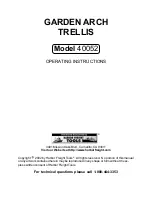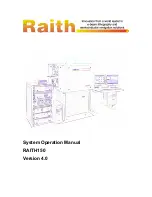
ROLLOMAXIMUM XL
Page 22
The hydro-clip spacer rings (C) are
stowed on the scale (D), when not in
use. If no spacer rings are used on the
cylinder, the harrow can go to the max-
imum depth. Two types of hydro-clip
are supplied with the machine with a
total of 4x 31.8 mm and 6x 21.4 mm
rings. As the spacer ring is changed
with 10.4 mm on the cylinder rod, the
harrowing depth changes by 12.1 mm,
i.e. the ratio is 1:1.16.
The hydro-clip spacer rings act as bottom stops for the harrow depth. If you wish
to make the harrow setting deeper, use more spacer rings and if you want a shal-
lower setting, use fewer. The hydraulic harrow hoist is not designed to be operat-
ed without a bottom stop, i.e. with continuous hydraulic depth adjustment, as this
will result in an uneven harrowing depth between the sides. The scales (D) are
used to indicate that the working depth is the same on both sides.
Adjusting the rear levelling board
The mechanically adjustable rear levelling board is an implement that is exclusive-
ly designed to level the surface after the harrow tines to create optimum condi-
tions for the use of the rear cross-kill roller.
The levelling board (A)
is spring-mounted and
mechanically depth ad-
justable via spindles
(B). There are two spin-
dles per section. All
spindles should be have
a common setting to
ensure optimum work-
ing across the whole
working width.
Do not use the rear levelling board as a dozer blade. This will cause unnecessarily
loading of the machine and lead to a poor surface finish.
Adjusting the rear cross-kill board
C
D
A
B
















































